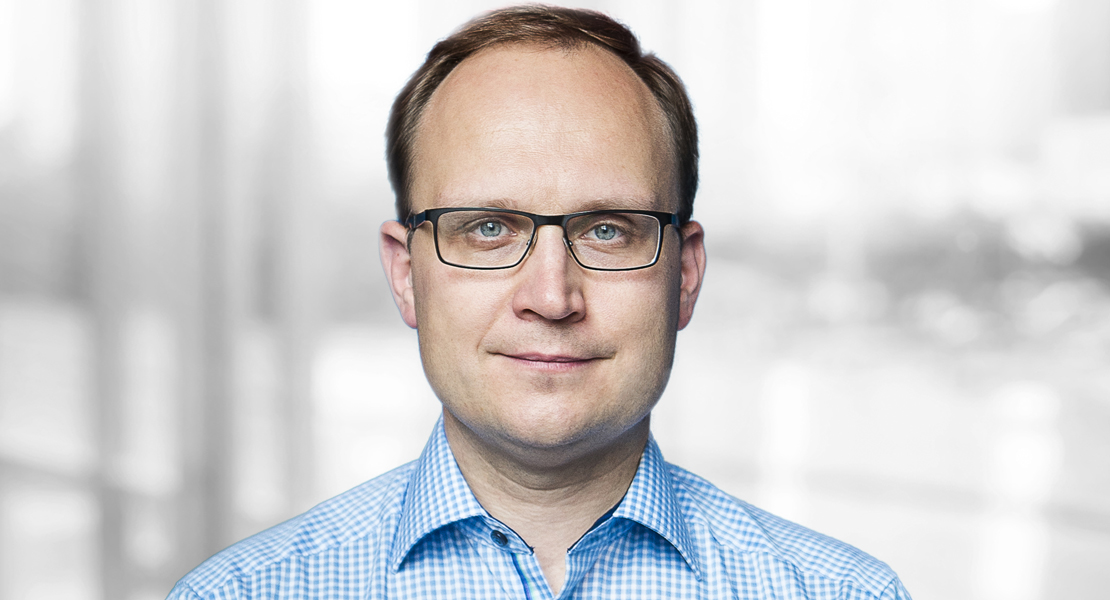An interview with Hypoport CEO Ronald Slabke about agility, self-organization, local autonomy and the human factor. "Agility", says Slabke, "is contrary to the way decisions are made in large corporations."
Detecon: Agility has today become a buzzword that is used constantly, whether the context is meaningful or not. What is your position on the agility concept?
Ronald Slabke: I don’t like using the term; I prefer to speak in our company about self-organization rather than agile organization. Hypoport's target vision is to be attractive to talented people. This vision has been derived from the idea that talented people like to work and solve problems together, and they want to have a direct impact on how things are done. The combination generates good group dynamics. A large number of talented people also draws even more talented people, and the company grows. This positive spiral leads to commercial success. As far as my observation of agility in traditional industry is concerned, I see more of an intervention process against agility. Agility is contrary to the way decisions are made in large corporations. In this sense, agility and a large German corporation are in conflict.
How do you manage to stay flexible and consistently realize self-organization despite growth?
One idea is to split up operations into autonomous units or subsidiaries. This is exactly what we did three years ago. This approach is based on the understanding that we are now a family, a network of companies that work together synergetically. The division People & Organization at Hypoport – the holding of this family of companies – focuses on cultural development and advises the individual entrepreneurs in the network on continuing development of their corporate cultures in such a way that they remain attractive to talented people. Self-organization and structuring freedom play the key role here. Everyone who joins the company as a new employee should be able to arrive and get started immediately.
What criteria are followed for the creation of the autonomous units, and what connects them with one another?
The core value creation and the orientation of the organization to a target group defined as concretely as possible. A subsidiary should be fully functional and able to perform in the value creation where it operates. The connecting link is the striving to be attractive to talented people and with it the responsibility of developing our own culture even further so that we are interesting to talented people. You might also call it the operating system of our network.
Other links are inter-connectivity and synergy. As part of the network, it is important for every autonomous company to realize technical value-creation synergies with the other subsidiaries. Working completely in isolation does not usually mine the full potential of a unit’s own task. As a rule, it is also usually fun to collaborate with colleagues from outside one’s own box. Otherwise, it really is difficult to identify with the network. Moreover, it is also less interesting for the network to acquire companies without any synergies because such acquisitions would be strictly capital investments. So we bring companies into the group that have the highest possible level of synergies with other subsidiaries.
Key word common construct of values and collaboration: What values and principles bind you all together – besides the aspiration to be an exciting place for talented people?
Being a network of companies that appeals to talented people means: One Family. We back this up with the following principles:
- Our organization is decentralized and autonomous. This is true for the holding as well as for every subsidiary.
- We collaborate with one another on certain topics, e.g.: “The team is responsible for its own atmosphere” or “The team is responsible for creating the greatest possible information transparency for itself and the adjacent units.”
- We learn constantly and consciously continue our development – this is based on the understanding that human development and the progress of every individual, every team, and every organization occur solely and exclusively within a process of constant learning.
- We lead together. This means that, as we see it, there is not just the one leader, but that there are various aspects of leadership.
These four broad topics define our understanding and the direction in which every organization, every team, and every person working for us should develop.
There is a rule stating that companies with more than 200 people are difficult to manage and generate cross-divisional functions that hinder agility and ultimately destroy efficiency. What is your take on the subject of overhead?
From my own experience, I can say that an organization starts to become complex when it passes the mark of 100 employees. This is less a matter of content and instead of the volume of communication that becomes necessary. So the first watershed mark is the number greater than 100. At 500, we noticed that we were becoming slower and slower, despite the existing partial autonomy of the subsidiaries – and that this would not be a successful model over the long run.
Still, I do not believe that the problem is limited to the number of employees; it also involves the complexity of the business model. I can imagine highly specialized companies that have more than 200 or 500 employees, yet work efficiently because they are oriented to a homogeneous target group. When there are a lot of different target groups, different products, and different value creation depths, an organization can almost not be small enough to operate successfully. But there is undoubtedly a lower threshold as well below which an organization no longer has the necessary power and is consequently inefficient.
How do you deal with this at Hypoport?
For one, we have turned our subsidiaries into autonomous units. This means on the one hand that they have full authority to act and to make their decisions on their own. On the other hand, we have significantly reduced the size of the units by doing this – from a corporation that decides everything to a dozen self-determining subsidiaries, each with a powerful organizational size.
In addition, some of our subsidiaries are gradually introducing a holacracy. This “operating system” for companies supports self-organization at all levels and employs a structure of circles rather than the usual hierarchies. Every employee assumes responsibility for his/her actions and for ensuring that these actions serve a common meaning and purpose.
And how do you find new employees? How does the application process run for you?
The first step is a report from a team of its needs. Then an announcement is made with the support of People & Organization. Finally, the team reaches a consensus decision on who is to be invited to a personal interview as well as the final decision on who will be added as a new member to the team.
Digital platforms and artificial intelligence are ultimately tools and vehicles for reducing complexity. This makes it possible to operate in small units and to interconnect appropriately. What role does technology play for you – with respect to the people process and to the common value creation?
We do not believe that it is possible to have a digital company with a centralized organization. At the speed at which our world is developing digitally today, a digital or IT company can survive only if it has the appropriate culture. What I mean here is the understanding of self-organization and decentralization without which the software company or information services are much too slow. I do not believe that you can be successful technologically without thinking this way organizationally as well.
Technology and AI have so far played a secondary role in recruitment or similar processes for us. There are merely support functions for the organization of the data flow, but none for making decisions. This is the responsibility of the teams.
What do you believe will be the greatest organizational challenges in the coming years, and what is your plan for addressing them?
A first step in the direction of dealing with the challenges is to admit to yourself that there is no such thing as THE solution or THE master plan. In today’s world of fast-paced development, it is hard to predict what exactly the challenges in the next few years will be. And yet we must think intensely about this well in advance. One important topic is certainly keeping the speed at a healthy level. In other words, not to be too fast and not to be too slow in the transformation of organizations because every person can continue to develop personally only at a certain speed. People, teams, or even entire organizations can quickly be overwhelmed. Conversely, if things move too slowly, it becomes boring for the talented people. This is a learning process for the organization and all of those in the organization who are involved in change from the outside perspective, i.e., People & Organization. It is important to show sensitivity and to send out warning signals to the various branches of the network.
The fundamental challenge for Hypoport for every topic that is relevant for the future is to generate enthusiasm among talented people so that they form the germ cell that will draw even more talented people such as themselves to Hypoport.
About Hypoport AG
Hypoport AG is the parent company of Hypoport Group. Operations of the subsidiaries of Hypoport Group revolve around the sale of financial services made possible or supported by financial technology (FinTech). The Hypoport subsidiaries are segmented into four business fields. Th e business field Kreditplattform operates Germany’s largest software platform for real estate financing, building loan products, and installment credit on the internet-based financial marketplace EUROPACE. A fully integrated system connects more than 500 partners from the sectors banks, insurance companies, and financial service providers. The business field Privatkunden utilizes the internet-based and independent financial service provider Dr. Klein Privatkunden AG and the consumer portal Vergleich.de to unify all business models that address consumers directly with consulting services for real estate financing, insurance, or pension products. The business area Institutionelle Kunden with DR. KLEIN Firmenkunden AG is a leading financial service partner for the housing industry and commercial real estate investors. The business area Versicherungsplattform operates Smart InsurTech, a platform for consulting, premium comparisons, and management of insurance policies. Hypoport AG is headquartered in Berlin and employs over 1,400 people. Hypoport is listed in the Prime Standard of the Deutsche Börse and has been listed in the SDAX since 2015.
About Ronald Slabke
Ronald Slabke (*1973) studied business administration in Dresden and began his professional career as an account manager at the Westdeutsche ImmobilienBank. In the middle of 1996, he moved to Dr. Klein, which at the time was a mortgage broker specializing exclusively in the housing industry, as assistant to the management. At the beginning of 1999 and under his own responsibility, Dr. Klein became the first online mortgage broker for private customers. At the end of 1999, he organized a management buy-out and took over the management of Dr. Klein. The merger with Europace to become Hypoport AG followed in 2001. Subsequently, as a member of the Management Board and co-CEO of Hypoport, he was in charge of sales and the technical further development of Europace and private customer business. In 2007, Hypoport gained its position in the Prime Standard of Deutsche Börse AG. Since 2010, he has been CEO and directed the strategic expansion of Hypoport as well as being in charge of the business area Kreditplattform.
This interview was conducted by Marc Wagner.






